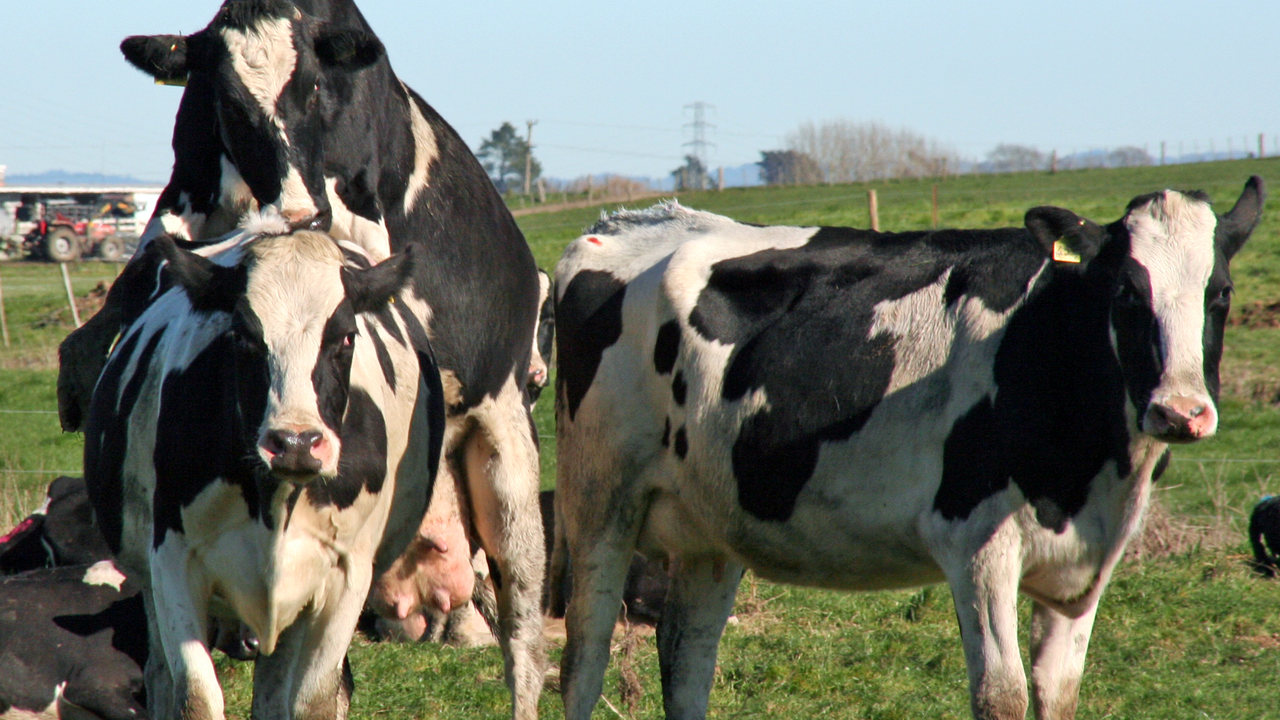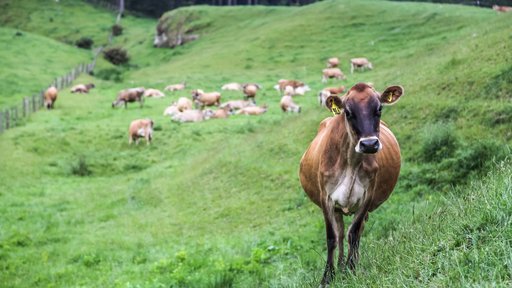Making improvements in these eight areas will help lift the reproductive performance of your herd.
This will give you:
- more days in milk
- a break between calving and mating
- more time for your cows to recover and reach peak fertility before mating starts.
Cows that calve after week six of calving are called ‘late calvers’ and have lower submission, conception and in-calf rates.
Three and six week calving rates of first calvers are the other key calving pattern targets. First calvers have higher calving pattern targets than the rest of the herd. If your first calvers are below target they’re more likely to struggle at the subsequent mating. If they don’t get back in-calf early as a first calver, they’ll calve later the following year. This will make it harder for them to get in-calf early, or at all, as a second calver (three-year-old).
MINDA and Fertility Focus report
To understand your herd's calving pattern, use your Fertility Focus report and the Calving Rate graph in MINDA. If they’re below the week six target, late calvers could be reducing reproductive performance.
Use the Submission Rate by Calving Pattern and In-calf Rate by Calving Pattern graphs to assess the impact of late calvers.
This will help them to get in-calf quickly, calve early, and get back in-calf early as a first calver. Research shows they generally outperform under-target herd-mates in:
- milk production in their first two lactations
- reproductive performance.
First calvers take approximately 10 days longer than cows to recover from calving and start cycling again, so it’s common to mate them ahead of the herd at 15 months old. Because of this calving pattern targets of first calvers are set above that of the whole herd ensuring they have adequate time to recover. First calver calving pattern targets are as follows.
- 80% calved by week three of calving
- 95% calved by week six of calving
The other key target for first calvers is the 90% three week submission rate.
Failure to reach the calving pattern or submission rate targets could be a reflection of:
- liveweight at 15 and 22 months old
- bull power or bull management
- body condition score at calving (target is 5.5)
- calving pattern
- management once in the herd.
MINDA and Fertility Focus report
Use MINDA Weights to see if your heifers hit liveweight targets at 15 and 22 months.
See how they calved on the Fertility Focus report or the Calving Rate by Age report on MINDA.
MINDA also provides by Age Group graphs for submission, conception and in-calf rates for first calvers (two-year-olds).
Body condition score (BCS) is a visual measurement of a cow’s body fat reserves. Meeting BCS targets at calving and mating is important to help cows:
- achieve a high 6-week in-calf rate
- achieve optimal health
- maximise production and reproductive performance
- cycle naturally during the first three weeks of mating.
Mature cows need to be BCS 5.0 at calving. First and second calvers should be BCS 5.5. For mating, cows should ideally be at BCS 4.5, but not below BCS 4.0.
Range is important, too. A group of mature cows might have an average calving BCS of 5.0, but this doesn’t mean each cow is actually BCS 5. In reality 50% of the group may be under BCS 5 and the other 50% over BCS 5. This means none of the cows are actually where they need to be. Taking range into account provides a better picture of how well feeding management is really going.
MINDA and Fertility Focus report
To get a picture of the BCS of your herd at calving and mating use BCS by Age graph.
The In-calf Rates by BCS graph will give you an idea of the impact your light cows had on your herd's performance.
Seek help from your rural adviser if you want to know how to assess or increase the BCS of your herd.
Good heat detection is critical and can be costly when done poorly. Good heat detection practices can help deliver:
- more days in milk (18-24 days lost for every missed heat)
- higher conception rate
- higher 6-week in-calf rate
- lower empty rate
- more AB replacements.
In the first three weeks of mating, 95% of your early-calved mature cows should be inseminated. You should also have less than 13% short returns. Herds that meet these targets are likely to have fewer missed heats or ‘invented heats’ (cows mated but were not truly on heat).
For further information see our PDF on the Best Time to Mate
MINDA and Fertility Focus report
Three MINDA graphs can help you assess how heat detection is going.
- Daily Submission Rates (select early-calved mature cow).
- Early Indicator.
- Return Interval Analysis.
5 Signs of heat

This short video will show you 5 signs of heat to help you pick cows that are on heat.
Poor bull selection, inadequate bull power, and poor management can contribute to:
- high not in-calf rates
- disease outbreaks, such as BVD
- calving difficulty
- poor bull health or performance, such as lame or infertile bulls.
Aim to continue to meet target in-calf rates during the natural mating period. Review service bull selection, numbers and management if the in-calf rate falls behind target during the natural mating period.
MINDA and Fertility Focus report
View the In-calf Rates for Whole Herd graph to see how your in-calf rates tracked during the natural mating period.
Healthy cows are more likely to:
- perform well productively and reproductively
- need fewer interventions and health treatments
- remain in the herd for longer.
MINDA and Fertility Focus report
Use the In-calf Rates by Diagnosis graph to see if you’re reaching In-Calf health targets. You'll also see the impact cow health has on your herd's reproductive performance.
Although artificial breeding practices can’t be monitored at an individual herd level, performance of individual technicians can be assessed. LIC constantly monitors the performance of technicians to make sure they deliver the best possible results.
If you have concerns about AB technician performance, contact your AB service provider for assistance.
Best practice in this area can help:
- Achieve high 6-week in-calf rates
- Maximise conception rates during AB period
For a hands-on, tailored approach to AB speak with your Agri Manager.
If you’re a DIY operator contact your AB service provider to obtain more information.
Different farmers will also have different traits they wish to select for depending on personal preference or farming system.
Best practice in this area can help:
- Improve genetic quality and asset worth of your herd
LIC offers a wide range of leading genetics that allow farmers to select for desired traits.
To see available options, take a look at our artificial breeding products.
For a hands-on, tailored approach to genetics speak with your Agri Manager.
Get familiar with the Fertility Focus Report
Fertility Focus Report: A quick guide





